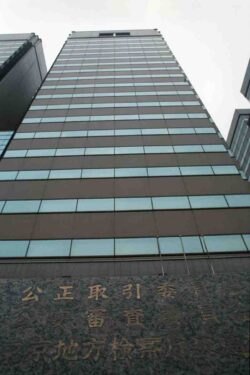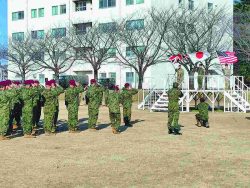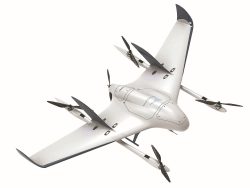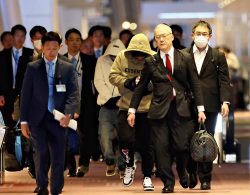16:03 JST, November 30, 2020
The government plans to replace more than 1,000 of its drones with new models featuring higher security functions, a move aimed at safeguarding national security by effectively eliminating Chinese-made units currently in use.
The government expects to successively procure the replacements from next fiscal year, with a view of introducing domestically produced drones currently under development with government support.
Drones store photos and flight data in an information system via a communications network. Their use is expected to expand as next-generation 5G standards become more widespread, but as has also been pointed out, they present risks of information theft via cyber-attacks and drone hijacking.
For this reason, the government will conduct a drastic review of the operation of drones by all ministries and agencies, independent administrative entities and public corporations from next fiscal year.
Certain fields will be designated as “critical operations” — defense and criminal investigations, inspection of vital infrastructure, surveys dealing with highly confidential information, and lifesaving and rescue operations — for which only models that adopt cybersecurity measures will be approved for use. The government will urge that drones be replaced within a few years in principle.
In addition, when procuring a new drone, the government will make it mandatory to consult with the Cabinet Secretariat beforehand and to undergo a risk assessment. Models suspected to be a supply chain risk, such as having a malicious program in the manufacturing process, will be excluded from the procurement list.
Chinese drones are certainly in the forefront of the government’s moves. A government survey in the spring found that almost all drones used in ministries and agencies, not including national security fields such as the Defense Ministry or National Police Agency, were produced by leading Chinese manufacturer DJI.
The United States is progressing with a phaseout of DJI products, which are cheaper but present exposure to supply chain risks, over concerns of information theft. Japan does not make public its drone operations in security fields, but taking into consideration the U.S. response, the pattern is to forge ahead with the replacement of DJI models.
Excluding those used for security purposes, the Japanese government currently has about 1,000 drones. The units are equipped with infrared ray and high-performance radar, and are used for such operations as management of dams, rivers and other infrastructure, as well as surveys to produce 3D maps. The government is pursuing replacement in non-critical fields as well, in principle out of fear that “if they are hijacked by a third party, they can be used maliciously for terrorism and other crimes,” a Cabinet Secretariat official was quoted as saying.
The government has begun looking into securing domestically produced ones featuring high security to replace the Chinese drones. A consortium of five Japanese companies, including Autonomous Control Systems Laboratory Ltd., Yamaha Motor Co. and NTT Docomo Inc., has already started development as a government-commissioned project, and is planning to start mass production next fiscal year. The objective is to protect flight and photographic data through advanced cryptographic communication technology.
"Politics" POPULAR ARTICLE
-

Japanese Language Requirement Eyed for Permanent Residency Status; LDP Plans Revisions of Laws on Foreigners
-
-250x167.jpg)
Japan Eyes Plan to Accept Up To 1.23 Mil. Foreign Workers by End of Fiscal 2028
-

AI-Driven ‘Zero Clicks’ Phenomenon Threatens Democracy; News Outlets Must Be Able to Recover Costs, Stay Independent
-

Japanese Public, Private Sectors to Partner on ¥3 Tril. Project to Develop Domestic AI, SoftBank to Be Key Firm Involved
-

Japan’s Defense Ministry to Extend Reemployment Support for SDF Personnel to Age 65; Move Comes Amid Ongoing Labor Shortage
JN ACCESS RANKING
-

As Chinese Tourists Shun Japan, Hotels and Stores Suffer
-

BOJ Gov. Ueda: Highly Likely Mechanism for Rising Wages, Prices Will Be Maintained
-

Core Inflation in Tokyo Slows in December but Stays above BOJ Target
-

Osaka-Kansai Expo’s Economic Impact Estimated at ¥3.6 Trillion, Takes Actual Visitor Numbers into Account
-

Japan Govt Adopts Measures to Curb Mega Solar Power Plant Projects Amid Environmental Concerns


























